Gotham City is a busy place, with a lot going down each and every week. In this monthly column, Joshua Lapin-Bertone helps you stay on top of it all by letting you know what you should be paying attention to within the Bat-Family…and why.
Robin is going to back to high school and it’s one of the toughest challenges he’s ever faced. Though, to be fair, high school is pretty traumatizing, even if you weren’t raised on a remote island by a group of ninja assassins.
Robin’s academic adventures kick off in Batman and Robin #1, written by Joshua Williamson and drawn by Simone Di Meo. If you’ve been away from the Batbooks for a while (or if you’re new), Bruce and Damian are living together again. Of course, they’ve done this before, but this is the first time it’s been without Alfred.
How do I put this delicately? Bruce Wayne is not a traditional father, and his communication skills could use some work. As for Damian, he doesn’t respond well to authority, and like most teenagers, believes he’s the smartest person in the room. Without Alfred there to mediate, father and son are in for some challenges.
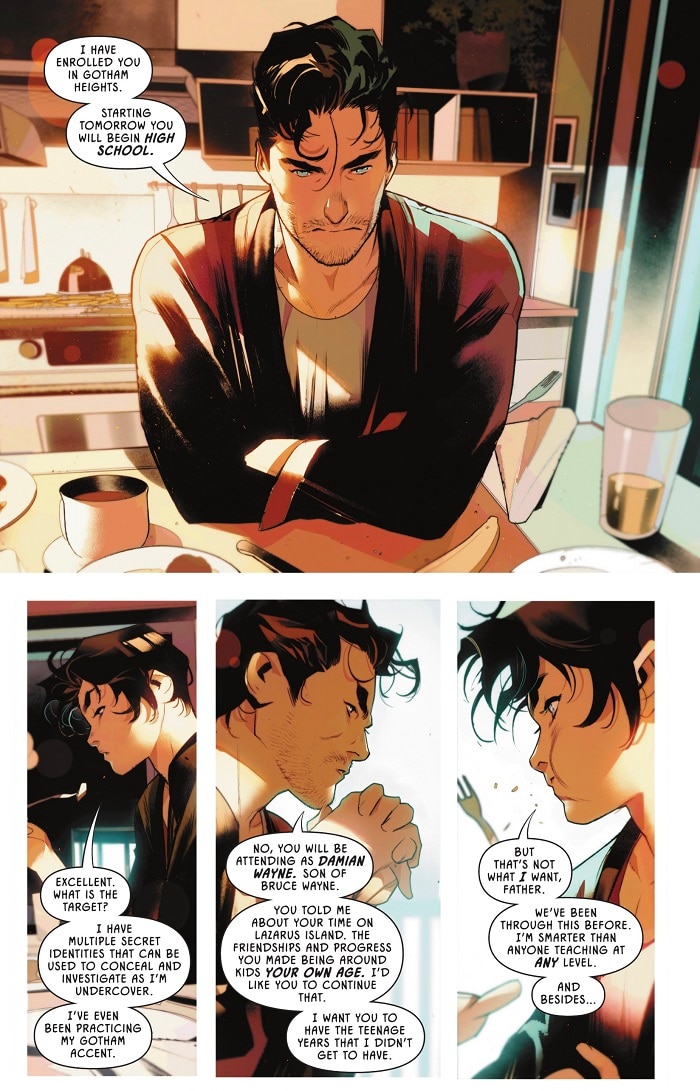
The first can be seen right in the debut issue, when Bruce tells Damian he’s signed him up for school. Damian immediately misunderstands the situation. “Excellent. What is the target?” he asks “I have multiple secret identities that can be used to conceal and investigate as I’m undercover. I’ve even been practicing my Gotham accent.”
In fairness to Damian, this is something Batman has done numerous times in the past. In fact, the first time a Robin was seen attending school was 1940’s Detective Comics #41. When a student is kidnapped from Blake’s Boys’ School, Bruce enrolls Dick Grayson in order to investigate. In this case, attending school wasn’t about education, it was about solving the case. Once Batman and Robin wrapped up the caper, Dick Grayson was never seen in the halls of Blake’s Boys’ School again.
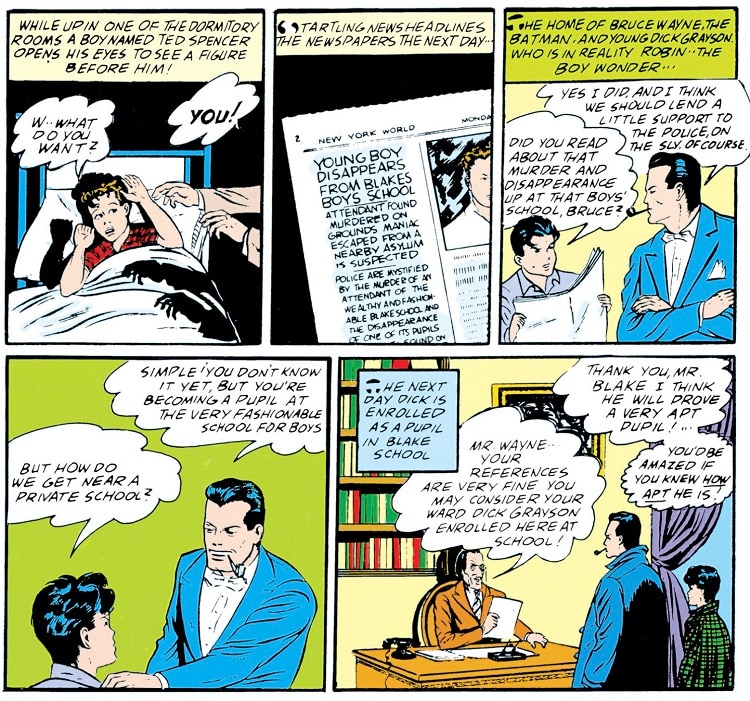
Bruce has learned a lot more about fatherhood since 1940, so his priorities with Damian are different. Explaining his reasons, he says to Damian, “You told me about your time on Lazarus Island. The friendships you made being around kids your own age. I’d like you to continue that. I want you to have the teenage years that I didn’t get to have.”
Bruce doesn’t seem as concerned about Damian getting a formal education as he does about the social aspect. And once again, I can’t help but contrast this with how school was treated with the other Robins. When Dick Grayson attended high school, Bruce had no problem using his partner’s classmates as a means to an end. In 1954’s Batman #81, Bruce instructed Dick to reveal his identity as Robin in front of his entire class in order to trick a criminal. The secret identities were restored by the end of the story, but Bruce never voiced any concern over how the ruse would affect Dick’s social life.
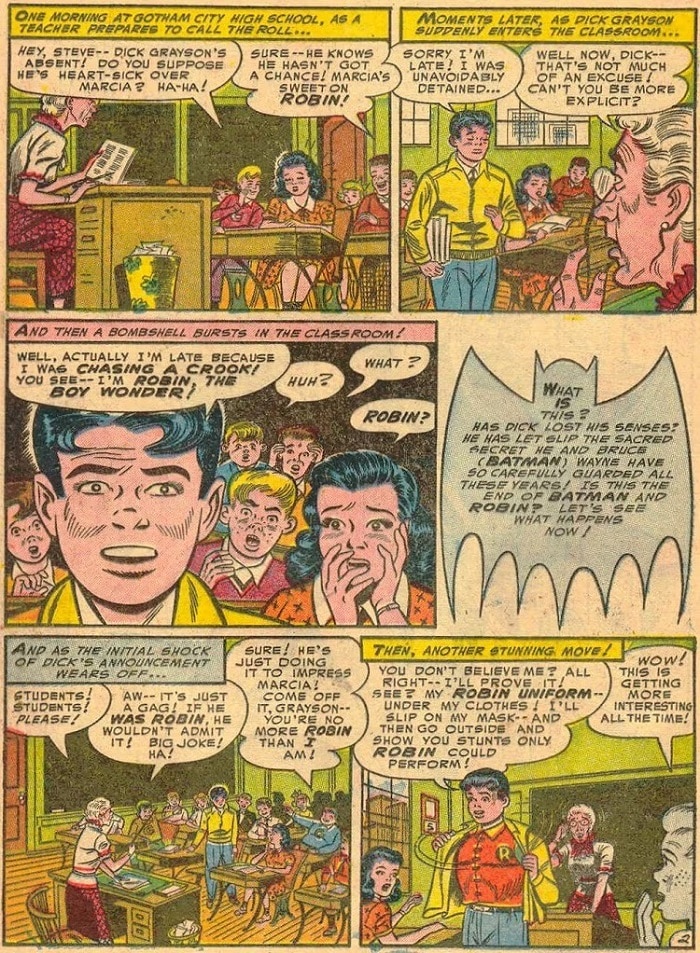
When Jason Todd was Robin, he began dating a classmate named Rena. As a result he began to step back from his duties as Robin. Bruce seemed almost resentful of it. In Batman #399, Jason cooled off his relationship with Rena in order to commit more time to his life as Robin. When Jason admitted his social life had taken precedent over his life as Robin, Bruce never corrected him. He never stopped to tell Jason that it was okay to have a normal life. Bruce didn’t have that balance, so why should Jason?
Clearly Bruce has realized he handled things poorly. Perhaps Jason’s life would have turned out differently if he had those social connections. Bruce sees the path Damian is on, and how their relationship was almost torn apart. He’s clearly reevaluating how to properly raise a teenager, and that means socialization. Dick had the Teen Titans, Tim had Young Justice, but right now, Damian doesn’t have many peers.
Unfortunately, Damian’s first day is disastrous and we see it play out in Batman and Robin #2. The Boy Wonder stands in front of the campus, unsure of how to proceed. As you can imagine, he has trouble fitting in. Don’t forget, Damian was raised by the League of Assassins and has no baseline for interacting with normal teenagers.
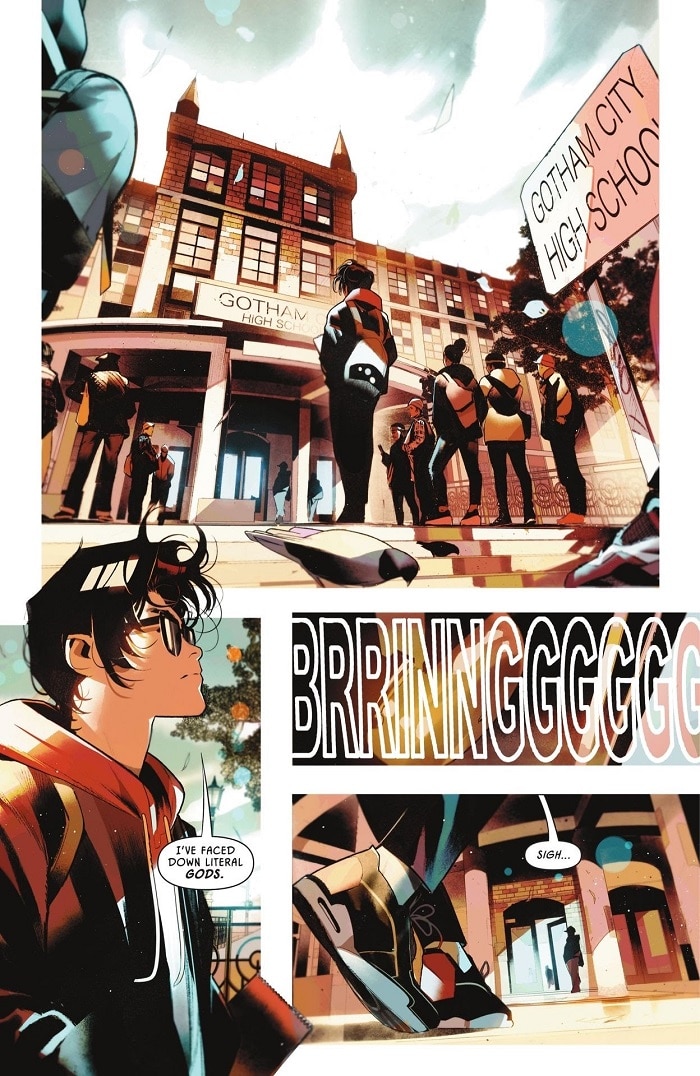
Of course, it certainly doesn’t help that one of Damian’s classmates steals a journal full of Damian’s stories. Each tale stars “Damian Vane,” an idealized version of our young sidekick. Damian’s classmate reads the contents of the journal in front of everyone, which has to be every high school student’s worst nightmare.
(Confession: Something eerily similar happened to me in school, but in my case, it was a journal of Batman fanfics. I remember the feelings of embarrassment, so my heart goes out to Damian here. Hang in there, bud.)
Damian goes on to imagine himself beating up the bully, but it’s just a fantasy. It’s also no surprise that Damian’s mind goes here because he was raised to solve all problems with violence. Damian is not the same person who first arrived on the scene in 2006’s “Batman and Son,” but there are some instincts that are hard to shake. This is why high school is so scary for the young Robin. He’s been trained to be a weapon and a hero, but he’s in an environment where acting like either can get him expelled…if not outright arrested. How does he train himself to behave in a situation like this?
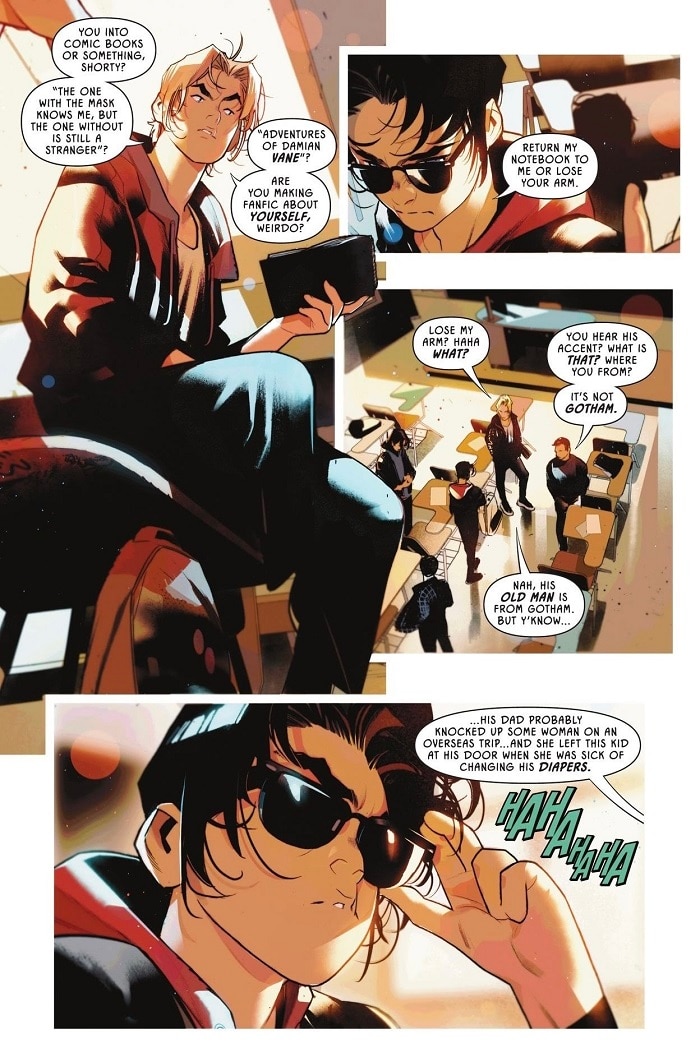
Bruce might not have the best advice for his son, since his teenage years were far from normal. As we’ve established, Dick’s high school life was just another extension of Batman’s mission, and Jason was discouraged from having a social life. However, prior to the death of his father, Tim had a fairly normal school experience, with an active social life. Damian would probably do well going to his older brother for advice. Of course, we all know that asking for help is not one of his strengths.
In the end, Damian’s first day of high school ends before his teacher even takes attendance. He flees after the journal incident. The boy who has fought literal gods is no match for the turmoil of being a high school student.
Let’s hope his second day goes smoother.
Batman and Robin #1 and #2 by Joshua Williamson and Simone Di Meo are both available in print and as digital comic books.
Joshua Lapin-Bertone writes about TV, movies and comics for DC.com, is a regular contributor to the Couch Club and writes our monthly Batman column, "Gotham Gazette." Follow him on Twitter at @TBUJosh.
NOTE: The views and opinions expressed in this feature are solely those of Joshua Lapin-Bertone and do not necessarily reflect those of DC Entertainment or Warner Bros., nor should they be read as confirmation or denial of future DC plans.















